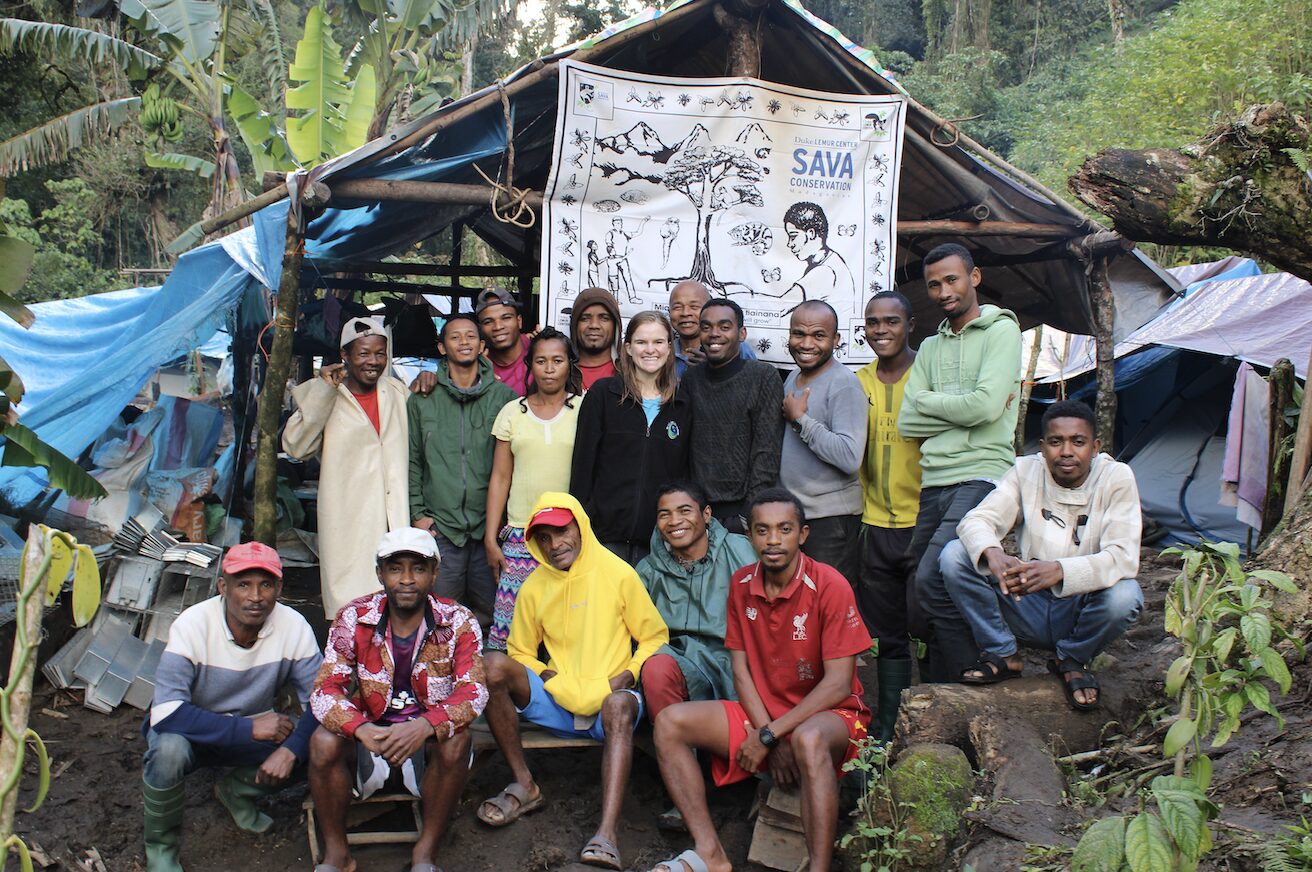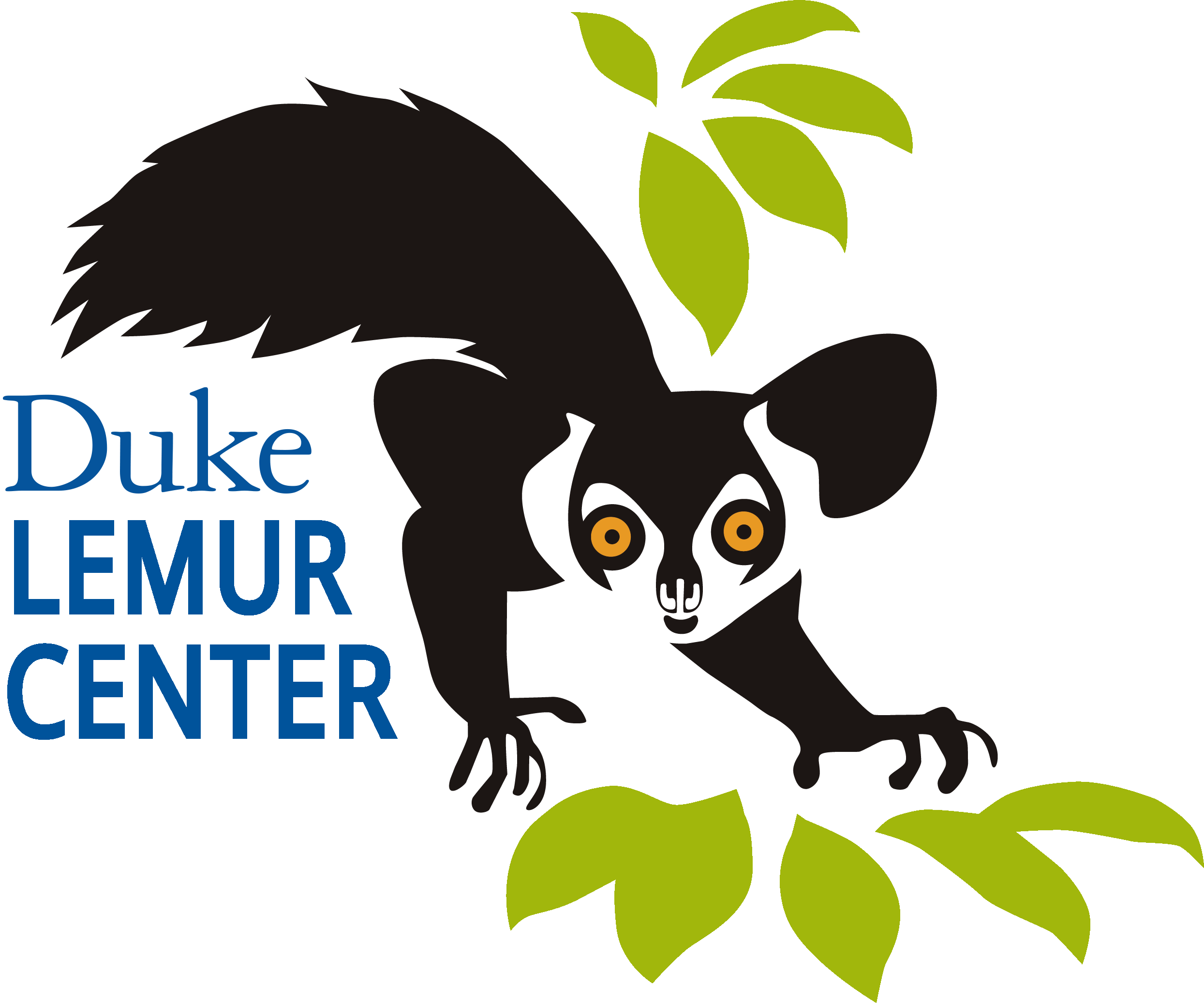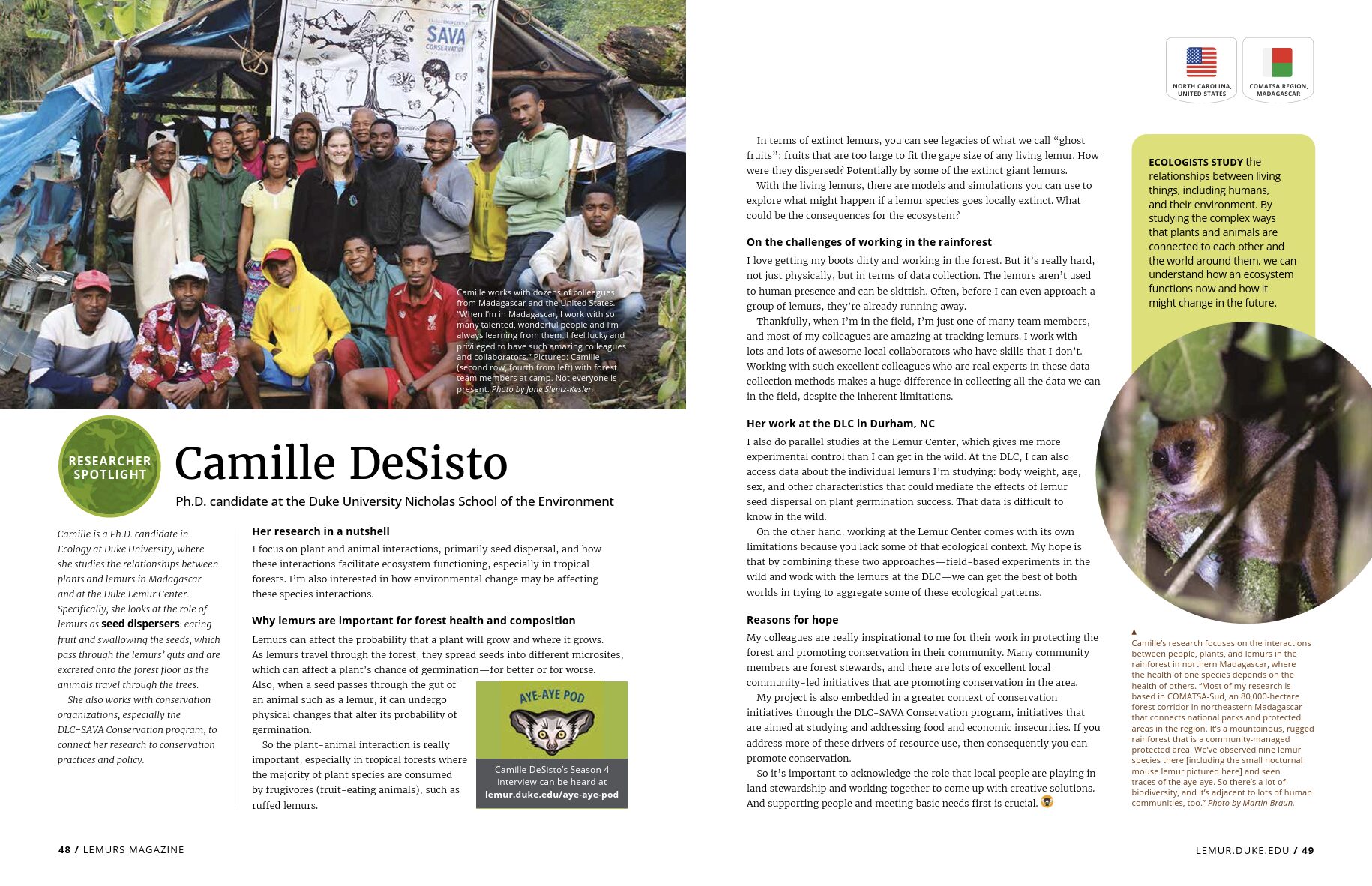Written by Camille DeSisto, Ph.D. candidate at the Duke University Nicholas School of the Environment. Originally published in LEMURS Magazine: The “Where” Issue in February 2025.
Ecologists study the relationships between living things, including humans, and their environment. By studying the complex ways that plants and animals are connected to each other and the world around them, we can understand how an ecosystem functions now and how it might change in the future.
Camille is a Ph.D. candidate in Ecology at Duke University, where she studies the relationships between plants and lemurs in Madagascar and at the Duke Lemur Center. Specifically, she looks at the role of lemurs as seed dispersers: eating fruit and swallowing the seeds, which pass through the lemurs’ guts and are excreted onto the forest floor as the animals travel through the trees.
Her research in a nutshell
I focus on plant and animal interactions, primarily seed dispersal, and how these interactions facilitate ecosystem functioning, especially in tropical forests. I’m also interested in how environmental change may be affecting these species interactions.
Why lemurs are important for forest health and composition
Lemurs can affect the probability that a plant will grow and where it grows. As lemurs travel through the forest, they spread seeds into different microsites, which can affect a plant’s chance of germination—for better or for worse. Also, when a seed passes through the gut of an animal such as a lemur, it can undergo physical changes that alter its probability of germination.
So the plant-animal interaction is really important, especially in tropical forests where the majority of plant species are consumed by frugivores (fruit-eating animals), such as ruffed lemurs.
In terms of extinct lemurs, you can see legacies of what we call “ghost fruits”: fruits that are too large to fit the gape size of any living lemur. How were they dispersed? Potentially by some of the extinct giant lemurs.
With the living lemurs, there are models and simulations you can use to explore what might happen if a lemur species goes locally extinct. What could be the consequences for the ecosystem?
On the challenges of working in the rainforest
I love getting my boots dirty and working in the forest. But it’s really hard, not just physically, but in terms of data collection. The lemurs aren’t used to human presence and can be skittish. Often, before I can even approach a group of lemurs, they’re already running away.
Thankfully, when I’m in the field, I’m just one of many team members, and most of my colleagues are amazing at tracking lemurs. I work with lots and lots of awesome local collaborators who have skills that I don’t. Working with such excellent colleagues who are real experts in these data collection methods makes a huge difference in collecting all the data we can in the field, despite the inherent limitations.
Her work at the DLC in Durham, NC
I also do parallel studies at the Lemur Center, which gives me more experimental control than I can get in the wild. At the DLC, I can also access data about the individual lemurs I’m studying: body weight, age, sex, and other characteristics that could mediate the effects of lemur seed dispersal on plant germination success. That data is difficult to know in the wild.
On the other hand, working at the Lemur Center comes with its own limitations because you lack some of that ecological context. My hope is that by combining these two approaches—field-based experiments in the wild and work with the lemurs at the DLC—we can get the best of both worlds in trying to aggregate some of these ecological patterns.
Reasons for hope
My colleagues are really inspirational to me for their work in protecting the forest and promoting conservation in their community. Many community members are forest stewards, and there are lots of excellent local community-led initiatives that are promoting conservation in the area.
My project is also embedded in a greater context of conservation initiatives through the DLC-SAVA Conservation program, initiatives that are aimed at studying and addressing food and economic insecurities. If you address more of these drivers of resource use, then consequently you can promote conservation.
So it’s important to acknowledge the role that local people are playing in land stewardship and working together to come up with creative solutions. And supporting people and meeting basic needs first is crucial.

Camille works with dozens of colleagues from Madagascar and the United States. “When I’m in Madagascar, I work with so many talented, wonderful people and I’m always learning from them. I feel lucky and privileged to have such amazing colleagues and collaborators.” Pictured: Camille (second row, fourth from left) with forest team members at camp. Not everyone is present. Photo by Jane Slentz-Kesler.


